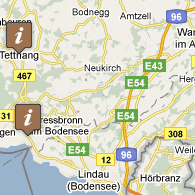Think Globally, Act Locally with Customer-Centric Communities

National borders and geographic regions. This is one of its great strengths: customers can shop the world over without leaving the privacy of their homes, and e-marketers can reach millions of people with a single website or e-mail campaign.
But its very vastness can also be disconcerting, and the myriad choices available may impact customer loyalty.
Even in a global environment, people still long for a small-community feeling; one of the reasons social networking sites have been so successful. They humanize the Web, making participants feel as if they are part of something special.
Enter customer-centric communities; a strategy that takes branding and website usage one step past the traditional notion of Web 2.0. With customercentric communities, any company can use branded tools to offer a community experience that turns prospects into customers, customers into loyal customers, and loyal customers into evangelists. How? By taking the familiar look and feel of social network sites, wrapping them in one's brand, and providing the intimacy of a small, local group that can reach across the world.
The advantages of a branded community (versus branding on a site like Facebook) include full control of the look and feel of the community, full control over advertising and revenue, ownership of data for acquisition purposes, full control of features, and robust metrics and measurement.
An ecommerce site that offers high-end gift products, for example, might offer a customer-centric community that contains wish lists, discussion forums on gift-giving, or message boards enabling communication directly with the company about future product lines and services offered - and all with invite-a-friend capability that ensures viral growth of the community.
To build this community, the steps are not much different from other business objectives. Choose goals, identify elements that will add value to the community for users, assign someone responsible for managing the community, lay out a content strategy, integrate the community into the company's business, and then launch, measure, adjust, and grow.
Custom communities provide the customer with what the Internet does not: intimate surroundings and the ability to be part of a community that shares one's interests and cares about one's opinions. At the same time, they provide marketers with an opportunity to capture customers' preferences, keep customers' attention focused on the brand, and an opportunity to engage in constant dialogue with customers and prospects. These communities are focused, engaged, and loyal - both to other community members and to the sponsoring company.
When using the Internet for business, we must think globally. But we also have the option of retaining the feel of local markets where our names and faces are known and trusted, where customer preferences and opinions are sought and valued, and where we share a sense of community with those around us.
Discover popular resources like Ning, KickApps and SmallWorldLabs that help you build customer-centric communities.
About the Author: Neil Rosen is the founder/CEO of www.ewaydirect.com. He is responsible for setting the company's strategic direction and for the development of new products. This is the third new venture he has founded and guided to success.










